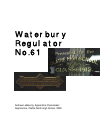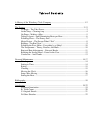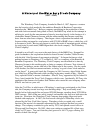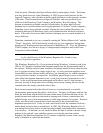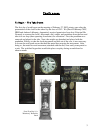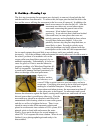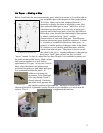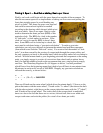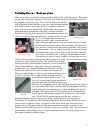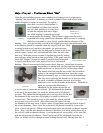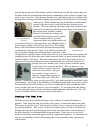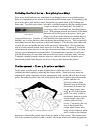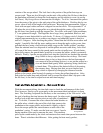
2
Until this point, Waterbury had been offering chiefly commonplace clocks. Their fame
was truly made, however, when Waterbury, in 1892, began to build watches for the
Ingersoll Company, who sold them as dollar watch alternatives to the expensive watches
of the time. These became known as Ingersoll Watches, and were produced by an
offshoot of the Waterbury Clock Company, the Waterbury Watch Company. This
became an extremely profitable venture for both parties, yet when Ingersoll went
bankrupt due to several mistakes involving the purchase of “defunct” watch companies,
Waterbury lost its most valuable customer. During the time in which Waterbury was
producing the Ingersoll-Waterbury watch, clock production held, but did not increase
much. A few new clocks were added, but their catalogue was very much standard as it
always had been.
Waterbury continued on its way, eventually creating the “Mickey Mouse clock” and the
“Timex”, though by 1942 it had already ceased to be its own corporation, having been
bought out by Norwegian investors and moved to Middlebury, CT. Now, the Waterbury
Clock Company lives on in its legacy of vintage antique timepieces and in the Timex
Corporation which it birthed.
As for a brief history of the Waterbury Regulator No. 61 and its long
ancestry of precision regulators...
The Waterbury Regulator No. 61 was produced during Waterbury’s business peak from
1903 to 1917 because of demand that stemmed greatly from the advancements made in
the railroad. With the railroad came schedules, and people needed to know what the time
was to a greater accuracy than simply night or day. As such, precision regulators were
found chiefly in train stations, banks, and hotels, yet demand grew for smaller timepieces,
such as precision watches, in large cities. In addition, people began to move to those
cities where time became important in one’s work place instead of generalized on one’s
farm. As the world became more modernized and in effect, smaller, time became a
necessity not only to keep trains from colliding and economy running, but also for the
common man who simply wanted the time of day.
Precision movements before the railroad, however, existed primarily as scientific
advancements quite beyond the public’s field of use. The early clock began with but one
hand, the hour hand, which showed the time within about 30 minutes the time of day. As
people became more and more interested in keeping track of time, a minute hand was
added allowing ease of time measurement to within approximately 30 seconds. Precision
clocks were those with a second hand, which measured to the second and finer,
dependant upon the clock. Today, in such a time-based world, the common clock has a
minute hand and most often a second hand. In 1903, The Waterbury Regulator No. 61
was among those clocks with a second hand and probably considered nearly extraneous
in its accuracy. At that time, no one needed to know the time to within a second, except
perhaps in the railroad’s case and those persons servicing the precision watches.
Presently, the Waterbury Regulator No. 61 remains a superbly accurate clock even by
today’s standards of a precision movement.




